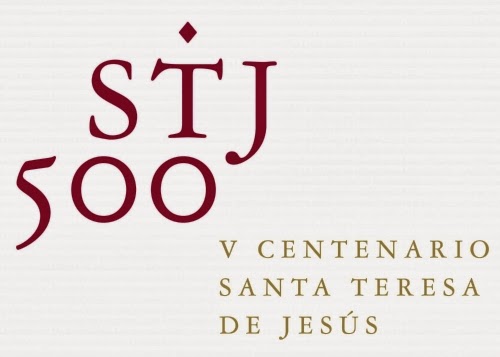Teresa de Cepeda y Ahumada, who is better known as Saint Teresa of Jesus or simply Teresa of Ávila (Gotarrendura or Ávila, 28 March 1515 – Alba de Tormes, 4 October 1582), was a Spanish mystic, writer and nun who founded the Discalced Carmelites, a branch of the Order of Our Lady of Mount Carmel (or Carmelites) and a doctor of the Catholic church. Together with Saint John of the Cross, Saint Teresa is regarded as the foremost representative of Christian experimental mysticism and one of the great masters of spiritual life in the history of the church.
The oeuvre of Saint Teresa reflects simultaneously or consecutively the experiences of a passionate mysticism, such as that which pervades El castillo interior o las moradas (trans. The Interior Castle or The Mansions) and the harsh everyday activity reflected in the Libro de la vida (trans. Book of Her Life); the ecstasies or raptures of Camino de perfección (trans. Way of Perfection) and Conceptos del amor de Dios (trans. Conceptions of the Love of God); and the succinctness of the worldly matters of the Libro de las constituciones (trans. The Constitutions), which can also be seen in the closed organisational structure of the new convents set out in the Libro de las fundaciones (trans. The Book of Her Foundations). Her life marked a whole era, because she defended women’s right to develop their own personality in a world dominated by men and convinced her best contemporaries of this undertaking: Fray Luis de León, Saint John of the Cross, Saint Francis Borgia, Fray Juan de Ávila, the father and professor Domingo Báñez, the inquisitor Quiroga..., and even Philip II. And despite scorn and insults, she travelled around Spain with the same initial spirit and renewed hope.
Official website of the Centenary of Saint Teresa of Jesus >>
Saint Teresa in the Miguel de Cervantes Virtual Library >>
Website on Saint Teresa of Jesus >>
Meditations on the Cantares >>
Digitised works of Saint Teresa of Jesus in the Biblioteca Digital Hispánica (BNE) >>
Works of art in which Saint Teresa of Jesus appears. Wikimedia Commons >>
Literary works in which Saint Teresa of Jesus appears. Wikisource >>




